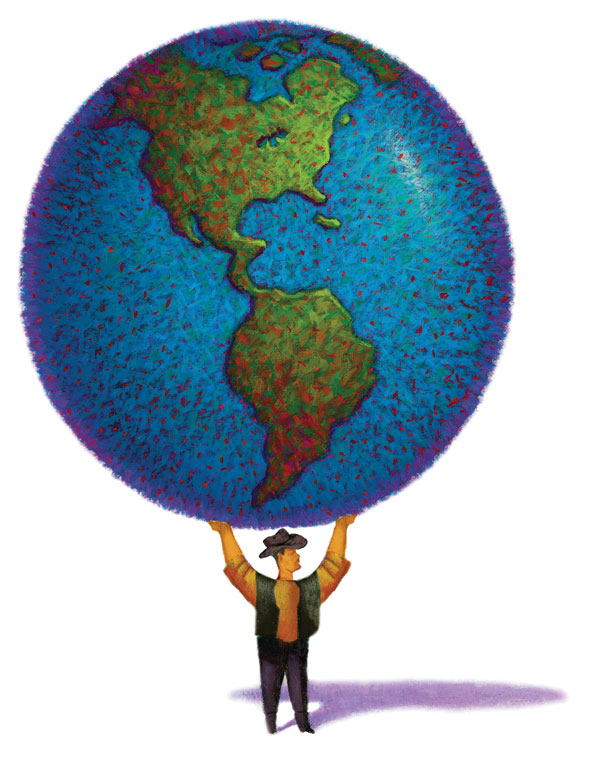As the industry works to feed the estimated 9 billion people by 2050, will industry structure change to accommodate the new demand plateau?

U.S. agriculture has a math problem. In simple terms, the factors are 38 years and 9 billion people. But the equations and formulas that will solve the problem will be complex and difficult.
��“I would suggest the next 30-40 years are going to see really dramatic economic and geopolitical shifts,” says Terry Barr, an economist with CoBank, a national cooperative bank and member of the Farm Credit System. “We’re going to see some severe changes and shifts on a global basis and it will result in some major restructuring in the way companies are organized and the way services are delivered.”
Speaking at the annual meeting of the National Institute of Animal Agriculture this week in Denver, Barr said population growth will drive those shifts. The challenge is that most of that population growth will occur in two areas – Asia and Africa. Each will come with unique and widely different challenges. Africa can't feed itself, while Asia will continue to be the fastest-growing economic region in the world with a rapidly rising middle class.
Looking at the major export markets of Brazil, Russia, India, China and Mexico, Barr says only one, China, is in the top six world economies currently.
“As I go forward to 2025, which isn't all that far away, all of a sudden we have two of those economies in that top six. China has moved up to No. 2 and India is No. 4. By the time we get to 2050, four of those economies are in the top six and China is now the No. 1 economy in terms of total size (the U.S. slips to No. 2). India, Brazil and Mexico have moved up. So the scale of economic growth is going to be outside the U.S. and that’s going to reshape a lot of strategies with a lot of companies,” he says.
Equally important, he says, are shifts in income. About 10% of China’s population, defined as $10/day, is in the middle class. Over the next 20 years, it could be as high as 75%. “So the next 20 years, you’re going to see a dramatic movement of people into that middle class, and that will dramatically increase their dietary requirements and their ability to pay,” he says.
Typically, Barr says, the acceleration in meat consumption occurs in the early stages of income growth. “We’re going to see about 2-3 billion more people in the middle class,” he says. “Almost all of it is going to be in Asia. That will be the driver in food demand going forward.”
Clearly, there will be constraints in the world’s ability to feed all its people. Those include land availability, water supply, technology, climate, and food waste and loss. In Barr’s mind, that means production efficiency must become the linchpin.
He estimates total meat production will need to increase 73%. “The reality is, you’re not going to meet those increases simply by having twice as much poultry, 80% more small ruminants, 60% more cattle, and 40% more fish. We’re not going to do it with animal numbers. It’s going to require that the production systems increase efficiency and minimize waste and loss in the value chain.”
The dynamics of global markets will continue to press the meat complex, he says. “And I think the challenge is, will it reshape the livestock industry going forward?”
He thinks that may be inevitable. Livestock producers have always had to deal with volatility. Now, U.S. producers are becoming more reliant on the export market. “When you take a sector and make it more export-reliant, you introduce a lot more volatility,” he says.
So, can we feed 9 billion people? Barr thinks the answer is yes. “The question is, what are the relative levels of prices for inputs that are going to be on the table? Are the balance sheets strong enough or flexible enough with sufficient liquidity to match the risk that’s out there? I would suggest to you as we go forward, as we try to satisfy this global demand, we will introduce more volatility in the sector and we will reshape the companies that are in play,” he says.
For more, go to www.animalagriculture.org.
About the Author(s)
You May Also Like



